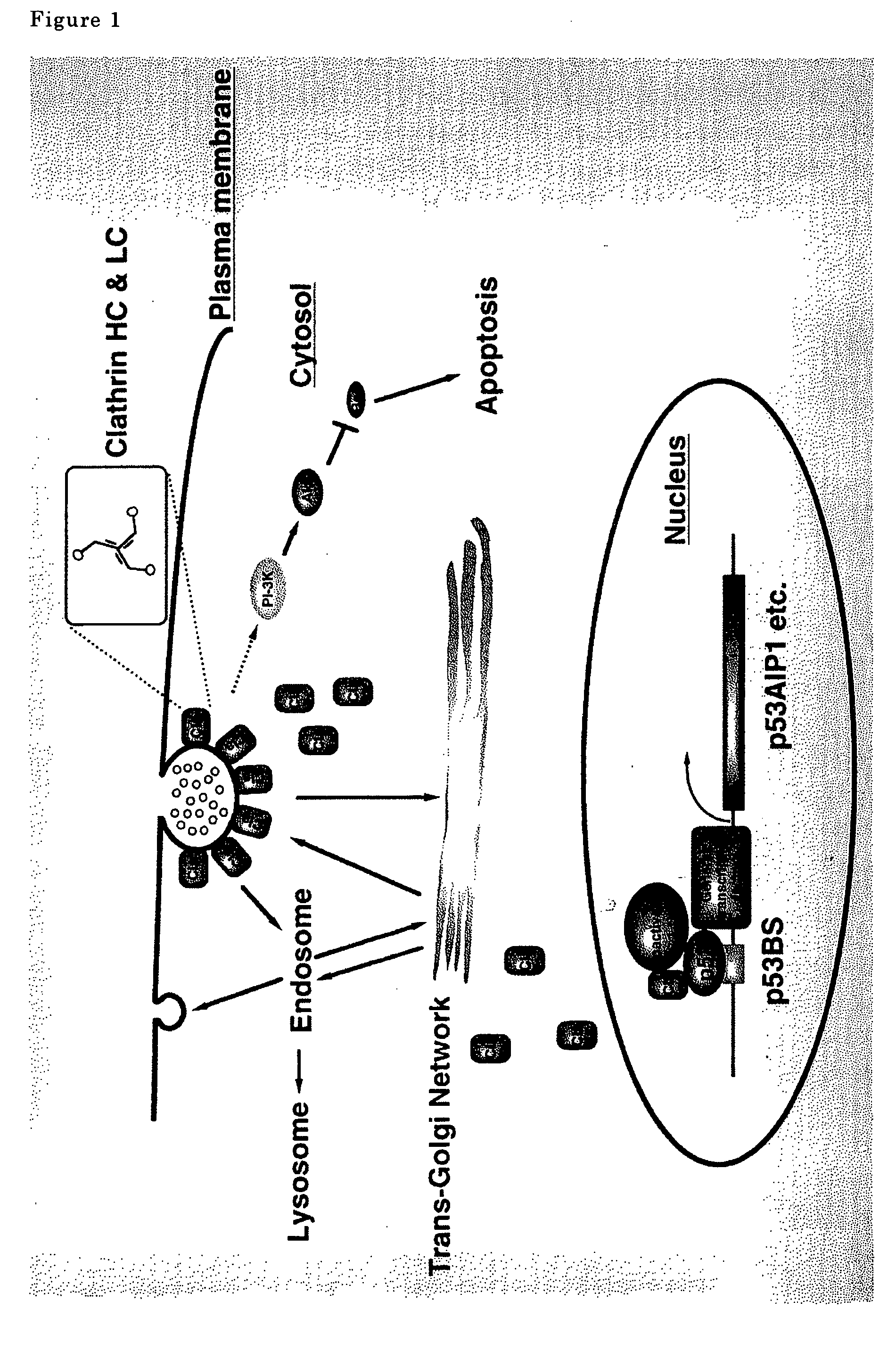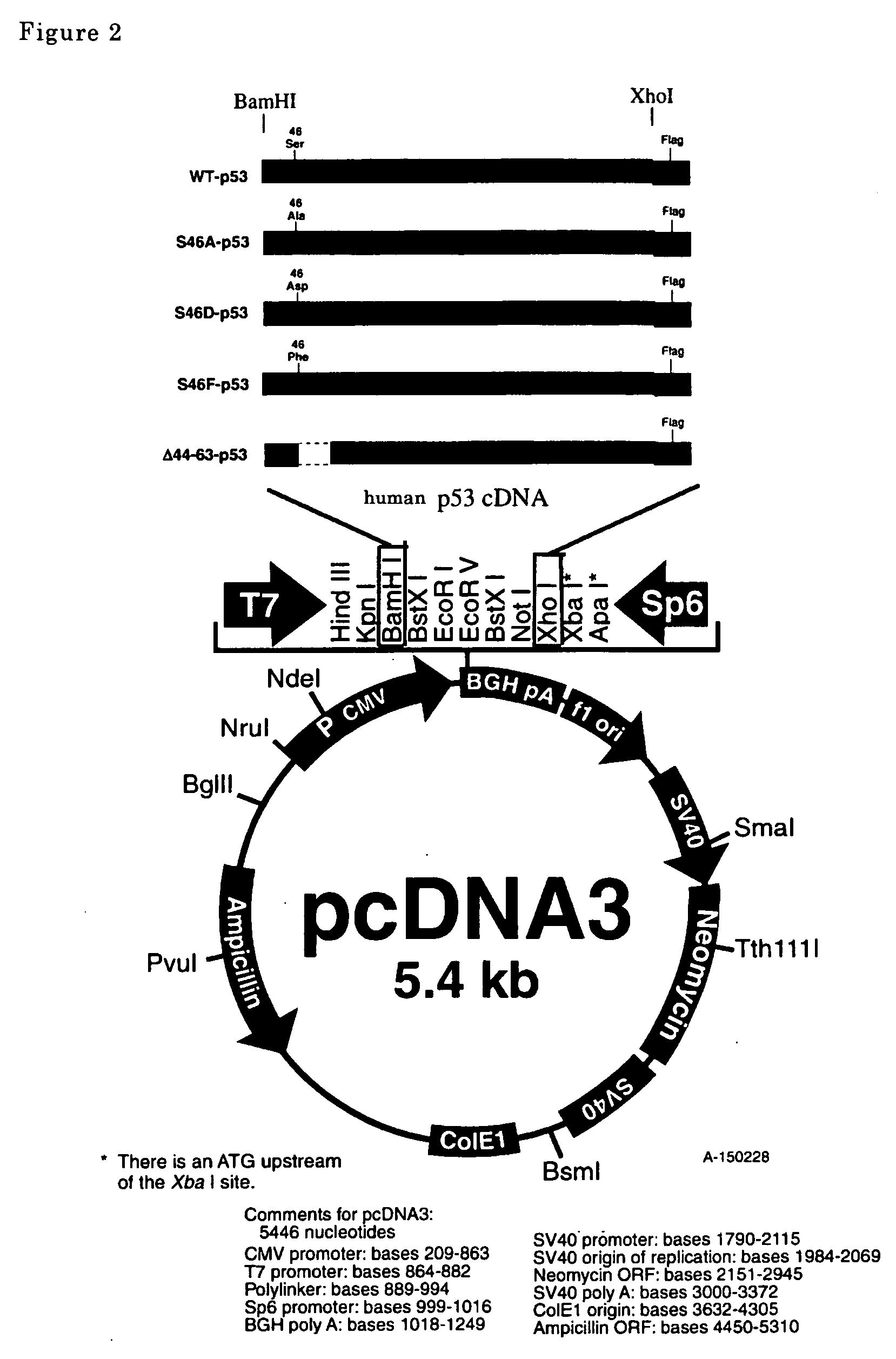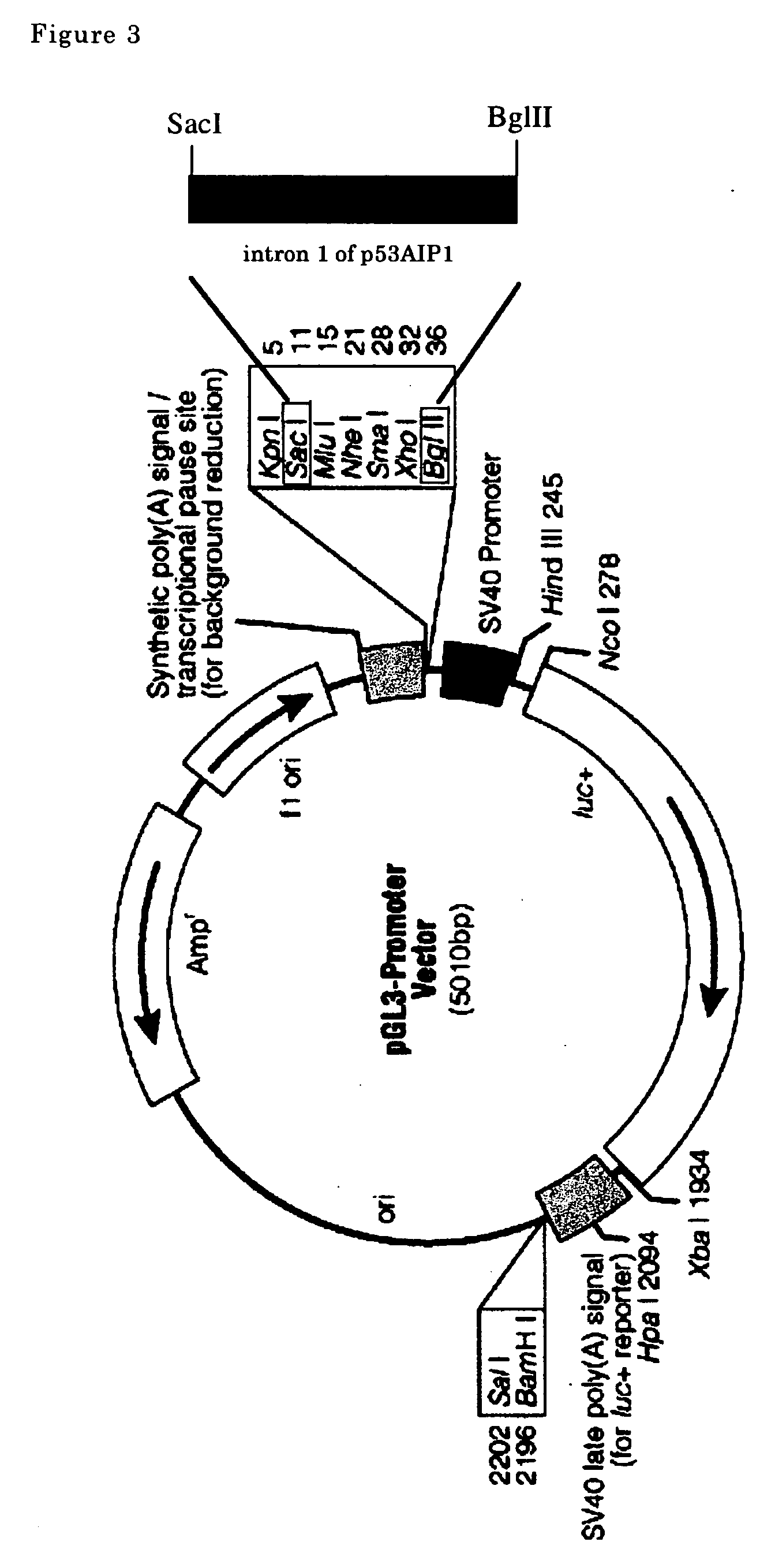Transcriptional factor inducing apoptosis in cancer cell
a transcriptional factor and cancer cell technology, applied in the field of transcriptional factor inducing apoptosis of cancer cells, can solve the problems of p53, unable to kill cancer cells, and attempts to induce apoptosis and induce apoptosis, and achieve the effect of killing cancer cells and p53
- Summary
- Abstract
- Description
- Claims
- Application Information
AI Technical Summary
Problems solved by technology
Method used
Image
Examples
example 1
[0064] In this Example, experiments were performed according to the procedure in test Example 4 except that the DNA in the DNA solution of 2) was prepared according to Table 5 and used pc-CHC prepared in Test Example 3 as the DNA transfected.
TABLE 5DNA solutionpcDNA3.1 or pcDNA-p53-f30ngp53AIP1pro.reporter100ngpcDNA3.1 or pc-CHC400ngphRG-TK10ngTotal540ngOPTI-MEM25μlLipo solutionOPTI-MEM25μlLipofectamine 20000.28μl
The results are shown in FIG. 9. For the DNA solution, pc-CHC (400 ng) and pcDNA 3.1 (400 ng) solutions are referred to as clathrin + and clathrin −, respectively. Clathrin heavy chain cDNA, inserted to an expression vector and transfected together with p53, was confirmed to enhance the transcriptional activity of p53AIP1 promoter. Especially, the enhancing effect of S46F substituent was predominant.
PUM
| Property | Measurement | Unit |
|---|---|---|
| mitochondrial membrane potential | aaaaa | aaaaa |
| min-width | aaaaa | aaaaa |
| max-width | aaaaa | aaaaa |
Abstract
Description
Claims
Application Information
 Login to View More
Login to View More - R&D
- Intellectual Property
- Life Sciences
- Materials
- Tech Scout
- Unparalleled Data Quality
- Higher Quality Content
- 60% Fewer Hallucinations
Browse by: Latest US Patents, China's latest patents, Technical Efficacy Thesaurus, Application Domain, Technology Topic, Popular Technical Reports.
© 2025 PatSnap. All rights reserved.Legal|Privacy policy|Modern Slavery Act Transparency Statement|Sitemap|About US| Contact US: help@patsnap.com



